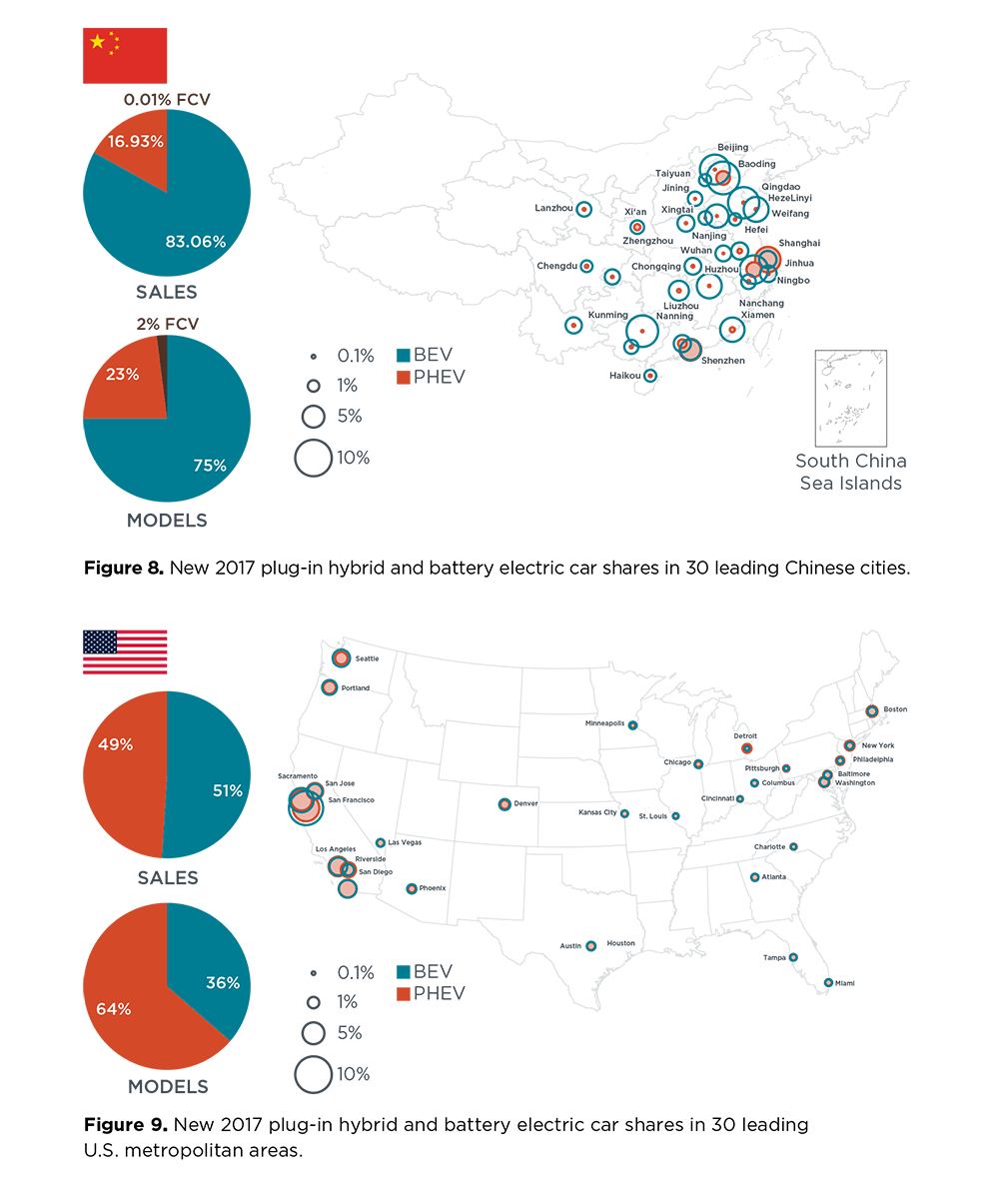Working Paper
Comparison of the electric car market in China and the United States
This working paper compares the market and technological characteristics of electric cars in China and the United States, based on 2015 and 2017 data.
The study finds that in both Chinese and U.S. markets a handful of cities accounted for the majority of electric car sales. The top 30 cities in both countries made up over 70% of the total electric car market in 2017, and approximately 40% of passenger vehicle sales.
In both countries, fewer than 10 brands made up approximately 90% of the total electric car market share in 2015 and 2017. In China, brands tend to perform better in markets where they are headquartered or have a manufacturing facility. In the United States, leading models are similar across states, as most automakers have robust nationwide distribution and dealership networks. There is no clear link between model availability and electric vehicle market share in China. In the United States, areas with more models available tend to have relatively higher electric vehicle sales and sales share. The United States generally had more models available (an average of 17) than China (13) in leading metropolitan areas in 2017.
In China, the sales and model availability of battery electric vehicles (BEVs) are far greater than plug-in hybrid electric vehicles (PHEVs). In the U.S. market, there is no significant difference between the sales and availability of two technologies. BEV sales increased in China between 2015 and 2017, while the PHEV market grew both in model number and sales in the United States. Microcars, which are cheaper and have a shorter all-electric range, continue to dominate the BEV market in China. The market share of the SUV segment grew for both PHEVs and BEVs between 2015 and 2017 in both countries, but SUV sales took up a larger portion of the PHEV market in China than in the United States.
In China, vehicle performance metrics correspond with the design of central subsidy, with BEVs clustered at 150km or above in 50km increments and PHEVs all having an all-electric range of 50km or more. The U.S. BEV data present a distinct bipolar distribution in terms of electric car driving range, with one peak at around 50–130 miles and the other at around 250 miles, primarily driven by the three Tesla models and Chevrolet Bolt. All U.S. BEVs analyzed were designed to receive the maximum federal tax credit, while many of the PHEVs have less than 16kWh battery capacities, and so are not eligible for the full $7500 credit.

